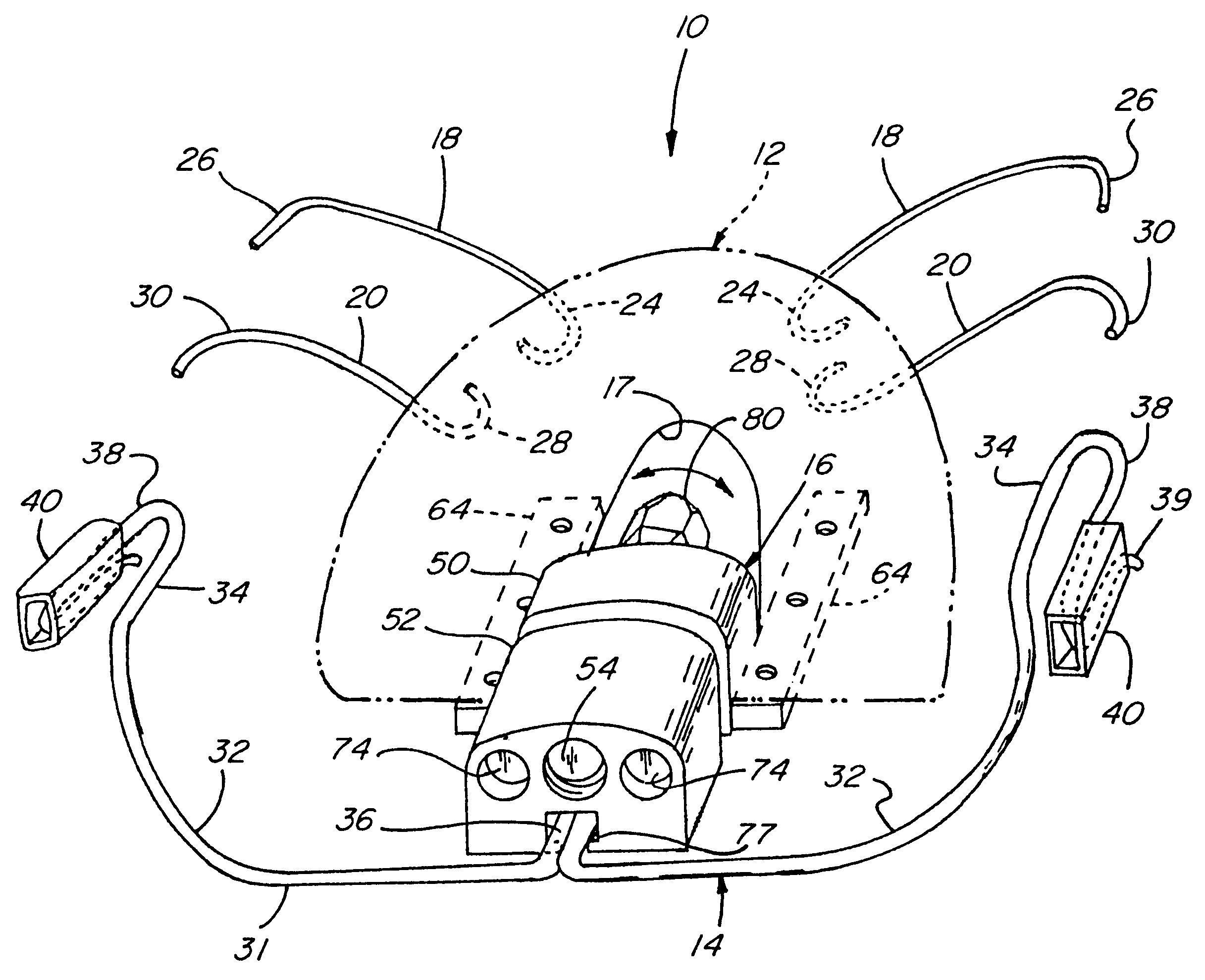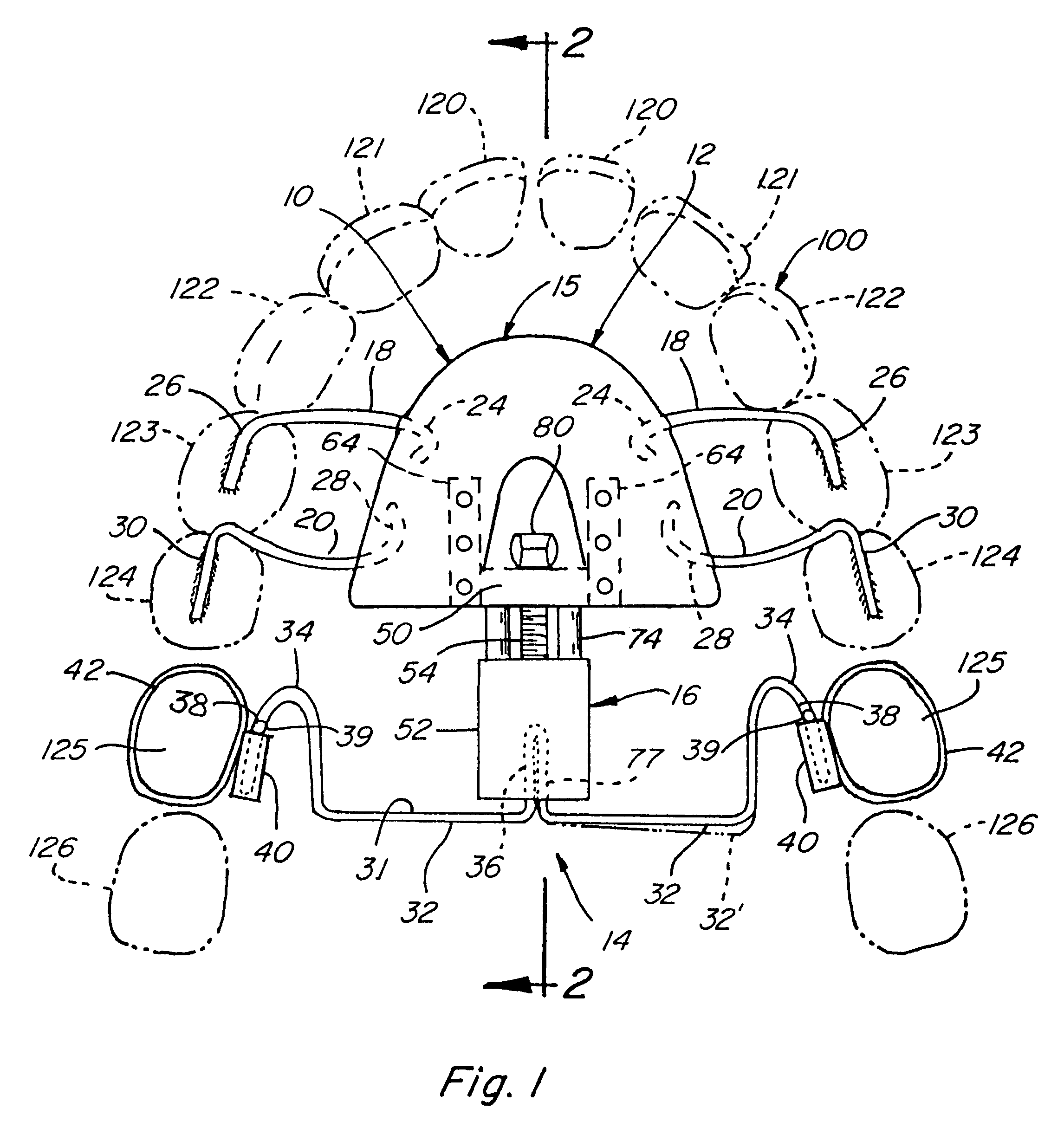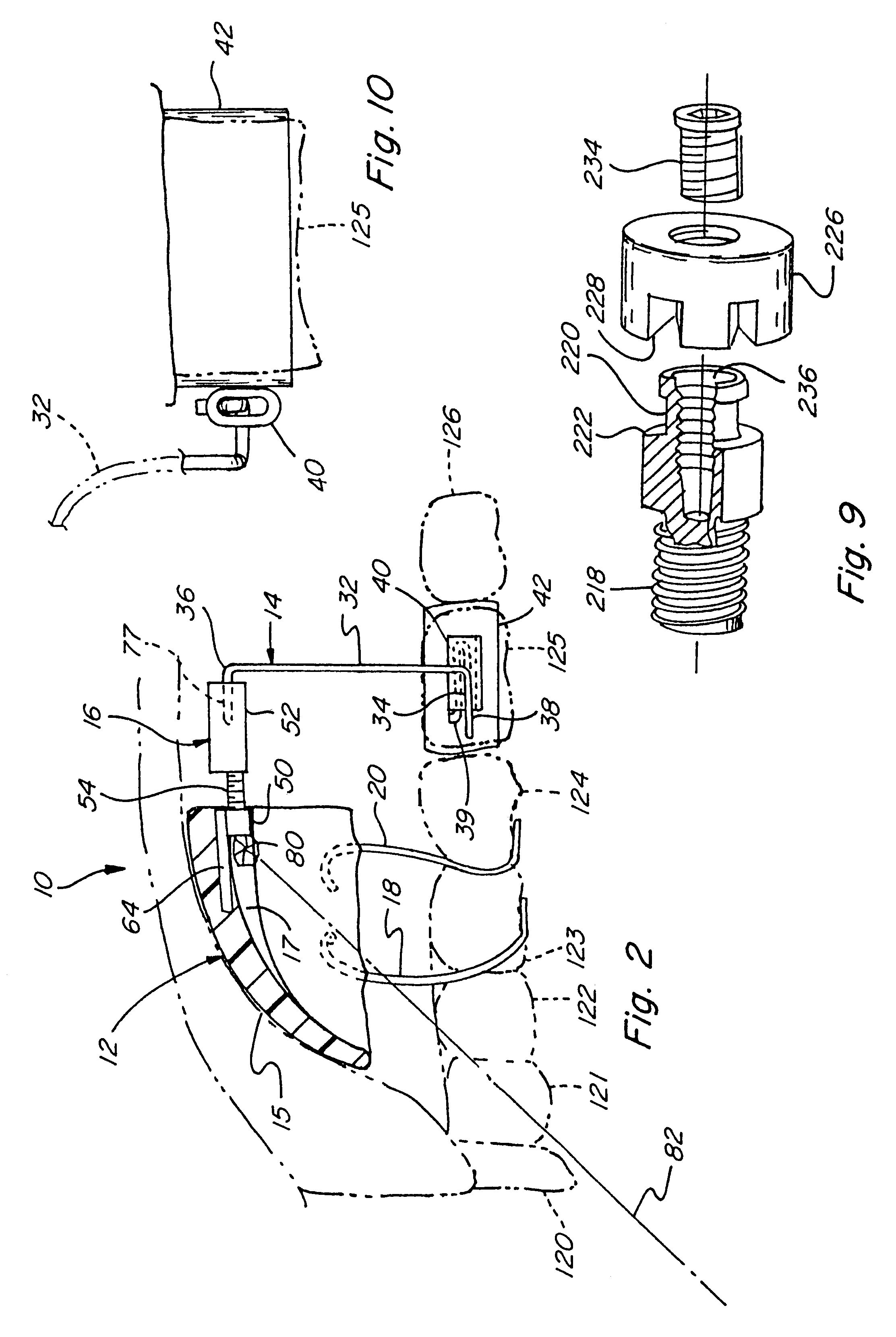Orthodontic distalizing appliance
a distalizing appliance and orthodontic technology, applied in the field of applications, can solve the problems of limited adjustment capability and considerably more complicated structural arrangement of parts of .s. pat. no. 5, and achieve the effect of convenient use and low manufacturing cos
- Summary
- Abstract
- Description
- Claims
- Application Information
AI Technical Summary
Benefits of technology
Problems solved by technology
Method used
Image
Examples
Embodiment Construction
:
Referring now by reference numerals to the drawings and first to FIGS. 1-3, it will be understood that the appliance 10 is intended for the purpose of distalizing molars by the application of a controlled pressure from a substantially fixed Nance button or other anchoring device such as an endosseous implant.
The appliance 10 is used in the area of the mouth generally known as the maxillary dental arch, more specifically the palate, indicated by numeral 100 and having a plurality of teeth arranged in an arch formation about the roof of the mouth and more particularly the palatal zone 102. The dental arch is further defined by the basal gingiva which provides a base for opposed sets of teeth consisting of the incisors 120 and 121, the canines 122, the premolars or bicuspids 123 and 124 and the molars 125 and 126.
The appliance 10 includes essentially a forwardly disposed support anchorage assembly 12, a spring assembly 14 and an adjustment device 16 which extends between a Nance butto...
PUM
 Login to View More
Login to View More Abstract
Description
Claims
Application Information
 Login to View More
Login to View More - R&D
- Intellectual Property
- Life Sciences
- Materials
- Tech Scout
- Unparalleled Data Quality
- Higher Quality Content
- 60% Fewer Hallucinations
Browse by: Latest US Patents, China's latest patents, Technical Efficacy Thesaurus, Application Domain, Technology Topic, Popular Technical Reports.
© 2025 PatSnap. All rights reserved.Legal|Privacy policy|Modern Slavery Act Transparency Statement|Sitemap|About US| Contact US: help@patsnap.com



